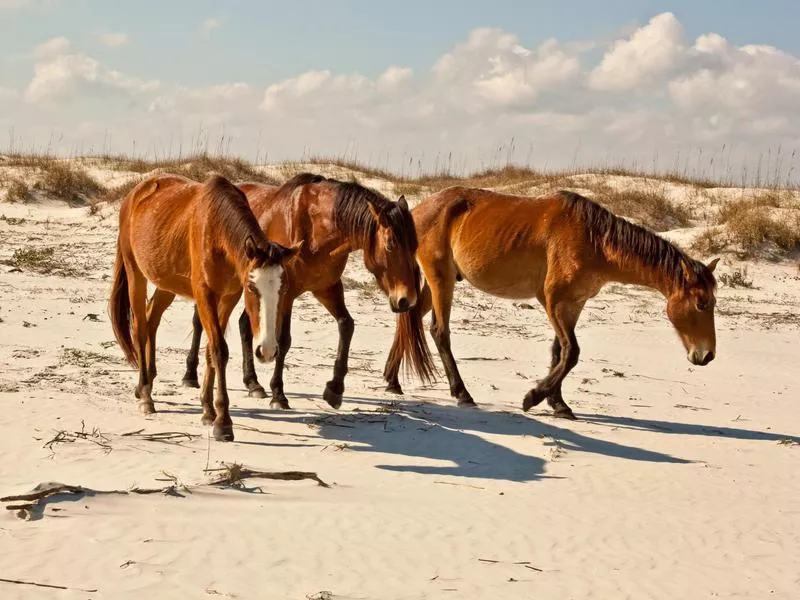
Cumberland Island is home not only to wild horses, but to hogs, armadillos and more. BeachcottagePhotography / Getty Images
Undeveloped beaches and surrounding sand dunes are a major draw at this barrier island off the coast of Georgia. Visitors come ashore in hopes of spotting any of the wild animals that reside on this 16-mile-long island — horses, hogs, armadillos and loggerhead sea turtles, to name a few.
Cumberland Island dates back to the 16th century, when it was settled by Spanish missionaries, and in the last 100 years it’s been home to some of America’s wealthiest families, including the Carnegies. In the 1970s, Cumberland Island was declared a national seashore, and much of the island is now protected wilderness, open to visitors from all over the world.
The island is a welcome escape from the hustle and bustle of life on the mainland, with quiet, primitive beaches that are wide, flat and perfect for meandering. Wild horses are often spotted in the sand dunes, and depending on the time of year, visitors may see the famous loggerhead turtles make their way up the beach to nest.